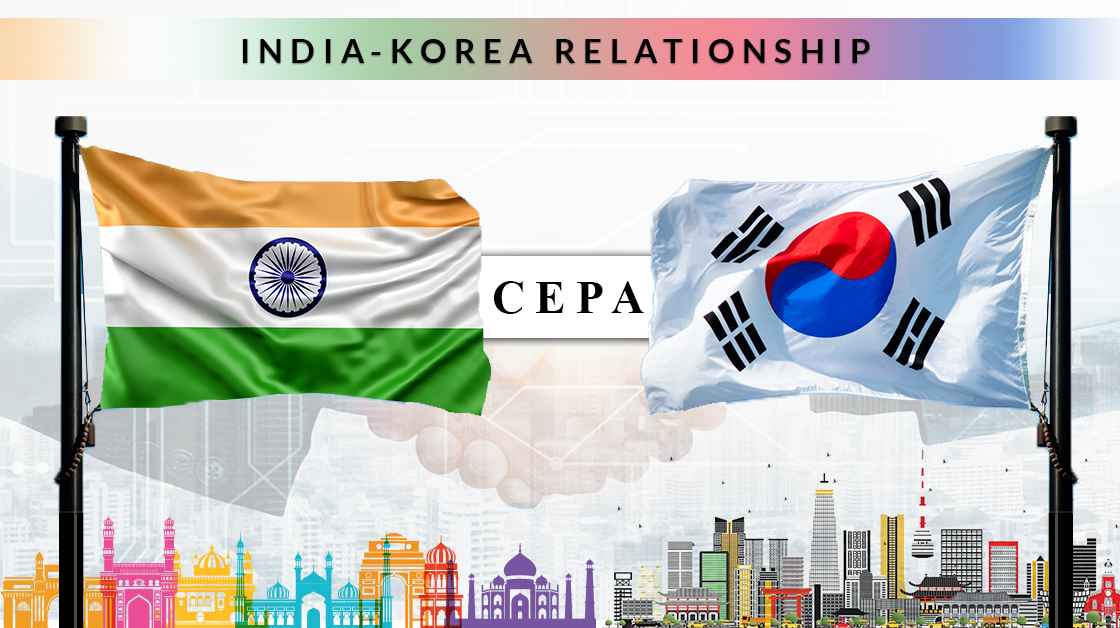
India enters into various economic partnerships and free trade agreements with different countries. One such agreement was entered into between India and South Korea (i.e., the Republic of Korea) known as the India-Korea Comprehensive Economic Partnership Agreement (also known as India-Korea CEPA). After 12 rounds of negotiations between both countries, the bill was passed in the Indian parliament in July 2009 and Korean Parliament in November 2009.
India-Korea CEPA became operational in January 2010. Further, as per the Mint, India, and Korea concluded to upgrade the bilateral CEPA after the meeting of the trade and commerce ministers of both countries in New Delhi. Let us see the CEPA between India and Korea and how it impacted the trade between both these countries.
Features of India-Korea CEPA
India-Korea CEPA played a major role in enhancing trade between the two countries. The annual bilateral trade reached $21.5 billion in 2018. Following are some of the key features of Indo-Korean CEPA:
- Unless specified, both nations reduced or eliminated the customs duty on originating goods of the other nation.
- One nation can request the other nation about the possibility of accelerating the reduction or elimination of customs duty.
- Goods covered under the CEPA shall be eligible for preferential treatment provided they satisfy certain rules of origin.
- Neither of the nations shall maintain or adopt any non-tariff measures on the import or export of goods destined for the other country in the agreement except for the rights and obligations under the WTO agreement.
- Measures that create unnecessary obstacles to trade in goods between both countries should not be prepared, adopted, or applied by any of the countries.
- In case a country decides to impose an anti-dumping duty, then it shall impose a duty less than the margin of dumping if such lesser duty is sufficient to remove the injury to the domestic industry.
Benefits of India-Korea CEPA
Following are some of the major benefits of the India-Korea CEPA that both nations fructified:
- It liberalized and facilitated trade in goods and services between both the countries
- It expanded the horizons of investments
- It helped establish a cooperative framework for enhancing and strengthening the economic relations between both nations
- It created a more favorable environment for trade and businesses while promoting conditions of fair competition in the free trade area
- It established transparent rules that govern investment and trade between both parties
- It helped in laying down effective procedures for the application and implementation of this agreement
- It explored new areas of economic cooperation between both nations and helped in the development of appropriate measures for a closer economic partnership
- It improved the competitiveness and efficiency of the manufacturing and service sectors of both nations and opened new doors for a higher level of trade and investment
- This framework further enhanced the regional and multilateral cooperation that expanded and enhanced the benefits of the same across Asia. This further promoted the economic integration of the Asian economies.
Following were the in-depth details of the Comprehensive Economic Partnership Agreement between India and Korea. In case of any queries, feel free to contact the ASC Group.





